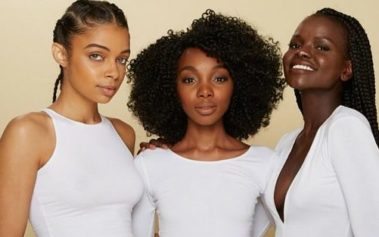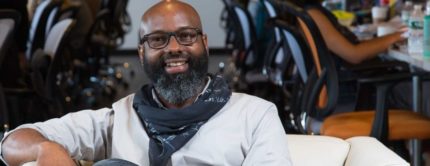After years of being forced to chose between their hair and staying within regulation, African-American servicewomen in the U.S. Army are praising revised grooming policies that’ll allow them to don dreadlocks.
The Army announced plans to lift the ban on locs early last month in a directive that largely focused on grooming policy changes that pertained to religious accommodations, according to The New York Times. Buried in the memo was text stating that female service members would now be permitted to wear “dreadlocks/locs,” as long as the strands are less than 1/8 inch wide, the scalp grid is uniformed and neat, and, when gathered, all the hair fits into the authorized bun size of 3 1/2 inches wide by 2 inches deep, as stated under Army Regulation 670-1.
The change was happily welcomed by African-American servicewomen, who, in April 2014, were outraged after the Army enacted policies that explicitly prohibited locs, twists, braids and other protective hairstyles common in the African-American community. Many argued that the regulations were confusing, discriminatory and left Black servicewomen with little hairstyle options while in uniform.
Although the military organization later loosened its regulations on two-strand twists and braids, the ban of dreadlocks/locs remained — until now.
“Is this a joke? Where’s Ashton?” Staff Sgt. Chaunsey Logan said excitedly in a video posted to her Facebook page. “On Jan. 5, in the year of our Lord 2017, we are now allowed to wear locks in uniform.”
“For me, it wasn’t just about hair,” she continued. “I’m completely against blind conformity and I’m rebellious in nature.”
1st Lt. Whennah Andrews, a District of Columbia National Guardsman and seven-year Army veteran, echoed Logan’s sentiments, saying news of the revised grooming regulations “felt amazing.”
“When I was going through this process, I just keep thinking about the females that were going to come after me,” Andrews said.
The Army Times reported that the effort to authorize locs was spearheaded by Marine Corps Staff Sgt. Cherie Wright. Andrews later teamed up with Youtube guru Nikki Nwamokobia, who has a channel on natural beauty, and together, they put together a nine-minute video examining the Army’s hair regulations. The video featured illustrations of how female soldiers could still be within standard(s) with locs, just as they could be with braids and twists.
Prior to its policy revision, the Army and the Navy were the only military branches that didn’t permit dreadlocks, as the Marine Corps and the Coast Guard had already authorized the style. The Air Force is still weighing the matter.
“I read the regulation on [locs] in detail and it seemed as if someone who really didn’t understand what they were wrote it,” Nwamokobia said of the Army’s hair policies.
For years, African-American servicewomen, as well as servicewomen of other racial/ethnic backgrounds have been forced to chemically straighten their hair, subject it to heat damage from constant flat-ironing or wear uncomfortable wigs in order to stay within grooming standards. Some women, especially those with thick, coarse or kinky hair that can’t be pulled into an “authorized” bun, have even resorted to cutting off all their hair.
Andrews told the Army Times she switched her hairstyle from long braids to locs early in her Army career, when military regulations defined dreadlocks as “matted” and “unkempt.” But, she said higher-ups were willing to give a pass for thinner, smoother-looking locs. It wasn’t until 2014 when the Army narrowed its definition of locs, forcing Andrews to take out her hair and wear a wig.
“I’m basically putting on a costume by wearing a wig,” she said. “It came to a point where I had to make a decision. And also, being an officer, you’re looked at as an example, so you don’t want to be out of regulation. I didn’t want to be defiant.”
The Army didn’t confirm whether Andrews and Nwamokobia’s video influenced their decision to allow locs but said discussion around the style came up during meetings over talks of allowing religious headgear and beards. Regulation changes for both happened as a result of those meetings.
“I felt like the biggest thing I want to do, and I felt like Nikky did a great job of doing that, was to remove the stigma,” Andrews said. “People hear locks, they just think Rastafarian, [and] ‘Oh, it’s going to be unclean.'”
“We’re not stating that we should not be in regulation,” she added. “We can adhere to the regulations. The locs are just another way of getting there.”


